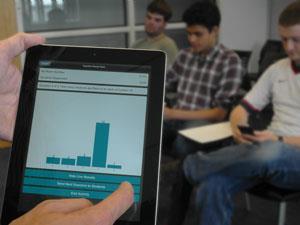Empowered students control their own learning

As indicated in then September issue, the concept of flipped teaching is currently a ‘hot topic’ in education. In this article, J Dominic Smith outlines an approach that was used to flip teaching at Lipscomb University in the US. This piece will be of interest to educators seeking a wider repertoire of strategies to support flipped teaching, and also to those who are implementing action research projects based on their teaching and would like to see a good example of how to evaluate a teaching innovation.
For the purposes of Smith’s study, which covered a period of two years, lecture material was recorded and made available to students. Two hundred short lectures were recorded, with the aim of replacing the ‘pure lecture’ component of the teaching. The concise nature of the lectures, which focused on particular concepts, aided navigation and ensured student attentiveness.
In-class sessions, for which attendance was compulsory, typically followed the structure: housekeeping, student questions, four to eight graded ‘follow-up’ problems, and problem-solving activities, with many opportunities for discussion throughout. Students were also required to complete online homework, which comprised 350–430 problems per semester, divided into graded assignments on a chapter-by-chapter basis, ensuring that students were always clear about the progress they were making and what they needed to do to improve.
A survey was administered to students at the end of each semester to gauge opinions regarding a range of aspects of flipped teaching, with a total of 235 responses collected. Students were overwhelmingly positive about virtually all aspects of the flipped teaching approach, notably regarding the quality and usefulness of pre-recorded lectures. One key finding was the fact that students tended to view recorded lectures more than once (on average around three times), for purposes which are outlined in the article. The only negative responses related to workload, with around half of students indicating that viewing online lectures was burdensome in terms of time, but it should be appreciated that they would be expected to undertake private study outside of lectures anyway.
The success of the approach means it will be used for the foreseeable future, with further innovations planned. These include the use of an interactive platform for the delivery of recorded lectures, which will allow students to flag areas of difficulty during viewing, freeing up even more time for interactivity during sessions in class.
References
J D Smith, Chem. Ed. Res. Prac., 2013, DOI: 10.1039/C3RP00083D









No comments yet